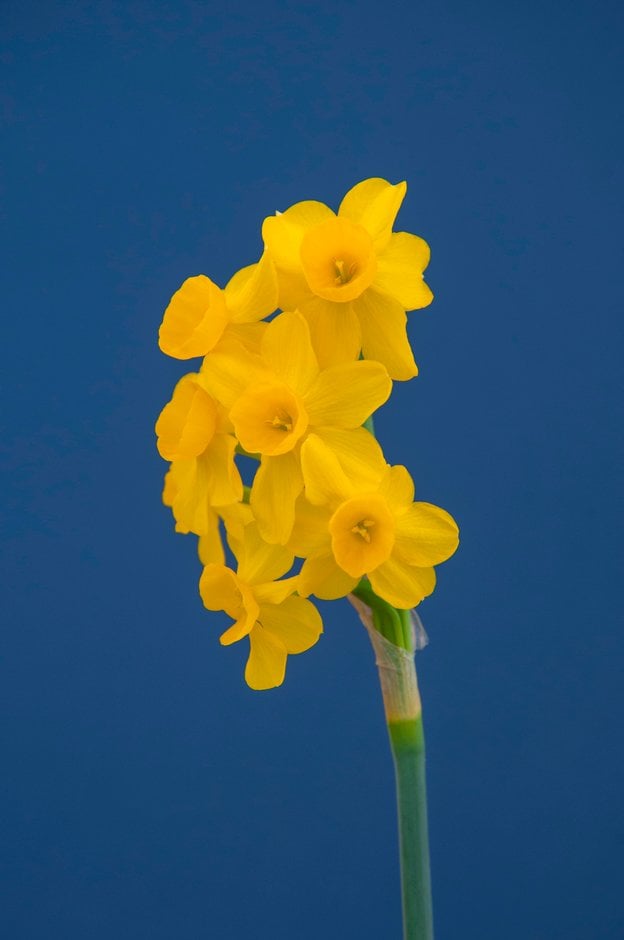Narcissus fernandesii (13)
Fernandes daffodil
A species daffodil 15-20cm high, with green leaves, and stems with from one to six strongly scented, bright golden-yellow flowers, each about 3cm across, with broad perianth segments and shallow cups, from early spring to mid-spring
Synonyms
Narcissus assoanus var. praelongusNarcissus baeticus
see moreNarcissus jonquilla var. fernandesii

Buy this plant
Size
Ultimate height
0.1–0.5 metresTime to ultimate height
2–5 yearsUltimate spread
0.1–0.5 metresGrowing conditions
Moisture
Moist but well–drainedpH
Acid, Alkaline, NeutralColour & scent
| Stem | Flower | Foliage | Fruit | |
| Spring | Gold Yellow | Green | ||
|---|---|---|---|---|
| Summer | ||||
| Autumn | ||||
| Winter |
Position
- Full sun
Aspect
South–facing or West–facing or East–facing
Exposure
Sheltered Hardiness
H5Botanical details
- Family
- Amaryllidaceae
- Native to GB / Ireland
- No
- Foliage
- Deciduous
- Habit
- Clump forming
- Potentially harmful
- Harmful if eaten, skin irritant. Wear gloves and other protective equipment when handling. Pets (dogs, cats, tortoises): Harmful if eaten, skin irritant. For further information and contact numbers regarding pets, see the HTA guide to potentially harmful plants
- Genus
Narcissus are bulbous herbaceous perennials with linear leaves and leafless stems bearing flowers, which may be solitary or in umbels, with 6 spreading perianth segments and a cup or trumpet-shaped corona
- Name status
Correct
- Horticultural Group
- Division 13 daffodils include all natural species and their varieties and forms
- Plant range
- SC Portugal C Spain
How to grow
Cultivation
Plant bulbs in autumn at one-and-a-half times their own depth, slightly deeper in light soils, in well-drained soil that is reasonably moist in the growing season in spring, in full sun; for more advice, see daffodil cultivation
Propagation
Propagate by seed, sown as soon as ripe in deep containers in a cold frame, or by division: separate and replant offsets as the leaves fade in early summer, or in early autumn before new roots are produced
Suggested planting locations and garden types
- City and courtyard gardens
- Cottage and informal garden
- Patio and container plants
- Coastal
- Rock garden
- Low Maintenance
- Banks and slopes
- Cut flowers
- Flower borders and beds
- Underplanting of roses and shrubs
Pruning
Deadhead as the flowers fade, but allow the leaves to die down naturally
Pests
May be susceptible to slugs, snails, large narcissus bulb fly, narcissus eelworm, and pollen beetles
Diseases
May be susceptible to narcissus basal rot, narcissus leaf scorch, narcissus smoulder, tulip grey bulb rot, other fungal diseases, narcissus yellow stripe virus, and other virus diseases
Get involved
The RHS is the UK’s gardening charity, helping people and plants to grow - nurturing a healthier, happier world, one person and one plant at a time.